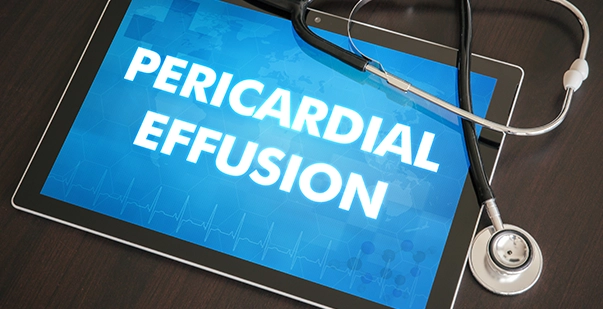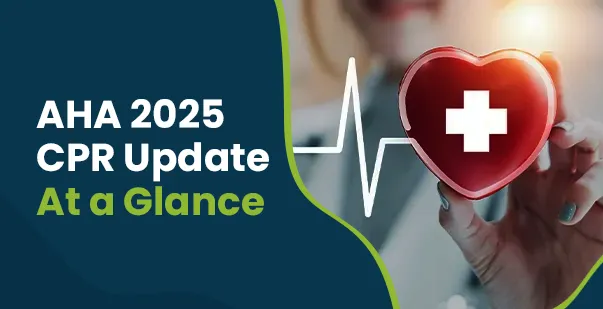Your heart muscle is actually protected by a thin sac known as pericardium. A small amount of fluid in the layer is essential to help your heart move around its sac and reduce friction between the layers. But what happens when too much fluid builds up in the pericardium?
Pericardial effusion is a condition in which fluid accumulates inside this sac, surrounding the heart muscle. It’s as if your heart is sitting inside a water balloon. This buildup of fluid can impair the heart’s normal pumping action, leading to severe complications if left untreated.
In most cases, the symptoms of pericardial effusion are not life-threatening on their own; however, they may indicate a serious underlying condition. This is why it’s crucial to identify the cause and treat it promptly.
But how do you find the underlying reason for the condition? Read on to learn about the symptoms and causes of pericardial effusion in detail!
Pericardial Effusion- An Overview
Your heart has three layers. The outermost layer is known as the pericardium, which forms the outer shell to protect your heart. It is a double-layered sac-like structure with a tiny amount of fluid between the layers for lubrication.
Pericardial effusion is an abnormal buildup of fluid in the membranous sac surrounding the heart. The quantity of fluid between the layers increases when there is an injury, trauma to the chest, or inflammation due to diseases in the pericardium.
Instead of lubricating the heart muscles, pericardial fluid affects their pumping ability. Excess pericardial fluid exerts pressure on the heart, reducing its ability to pump blood and oxygenate the body. When the fluid fills up quickly, it can lead to cardiac tamponade and block heart function.
Types of Pericardial Effusion
When there is too much fluid inside the pericardium, the heart will have no space to expand and fill with blood. When left untreated, the heart will cease functioning in a matter of minutes. There are three primary types of pericardial effusion including:
Transudative Pericardial Effusion
Transudative pericardial effusion occurs due to an imbalance between pressure and the volume of fluid in the pericardial space. It includes conditions like congestive heart failure and excessive intravenous fluids. These types of effusions are often characterized by transparent fluid with a relatively low protein concentration.
Exudative Pericardial Effusion
Exudative pericardial effusion occurs when the pericardium layer is inflamed or infected due to an underlying condition like cancer. The effusion fluid usually has an increased protein content.
Hemorrhagic Pericardial Effusion
Hemorrhagic pericardial effusion is caused by bleeding into the pericardial space due to the rupture or trauma of a vessel. These types of effusions usually contain a significant amount of red blood cells and high levels of iron with low levels of protein content.
Symptoms of Pericardial Effusion
Minor levels of fluid around the heart are often asymptomatic. Most individuals with the condition tend to develop symptoms only after a significant accumulation of fluid around their heart.
Some common pericardial effusion symptoms include:
- Chest pain
- Fainting or dizziness
- Cough
- Breathlessness
- Confusion and anxiety
- Increased heart rate
- Enlarged spleen
- Generalized body swelling
- Increased size of the liver
- Poor peripheral electric pulses
- Pericardial friction rub
- Beck’s Triad of Cardiac Tamponade
- Cyanosis ( Bluish discolouration of skin and music membranes due to poor blood oxygen levels)
Causes of Pericardial Effusion
Understanding the causes of pericardial effusion is vital for proper diagnosis and appropriate treatment. The most common cause of the condition is inflammation of the lining around the heart. In most cases, your healthcare professional cannot find the exact cause. Here are some common causes of pericardial effusion:
Pericarditis
Wondering what is pericarditis? It is a swelling condition of the pericardium layer that surrounds the heart. It typically occurs due to a respiratory infection. Research has found that the condition mostly affects men between the ages of 20 and 50. Some common types of pericarditis include,
- Bacterial pericarditis – Several types of bacteria can penetrate the fluid around the heart and lead to bacterial pericarditis.
- Viral Pericarditis: HIV and gastrointestinal viruses can result in viral pericarditis.
- Idiopathic Pericarditis: Idiopathic pericarditis refers to pericarditis that occurs without any underlying cause.
The commonly found pericarditis symptoms are,
- Chest pain (usually sharp and stabbing)
- Pain in the back, neck, or left shoulder
- Trouble breathing when lying down
- Dry cough
- Palpitations
Pleural effusion
The accumulation of fluid around the lungs is known as pleural effusion. Certain conditions can induce this condition, including coronary heart failure, organ failure, pneumonia, and trauma. Some possible pleural effusion symptoms are,
- Pain in the chest region
- Discomfort when lying down
- Difficulty breathing
- Shortness of breath
Heart Attack
When the blood supply to the heart is blocked, the heart muscle becomes damaged, leading to the death of heart cells. This causes inflammation that increases the fluid around the heart. However, with proper CPR administration, it is possible to save lives in emergencies and prevent the occurrence of such life-threatening conditions.
Heart Failure
If the heart loses its ability to pump adequate blood forward, fluid can build up behind it. The excess fluid can accumulate in various parts of the body, including the lungs, legs, and areas around the heart.
Aortic Dissection
Aortic dissection is a severe condition in which the walls of the aorta (a large artery in the chest and abdomen) become damaged. This will cause blood (not fluid) to collect around your heart.
Trauma
Any injury to your heart could induce bleeding into the pericardial sac. This might happen from a severe blunt injury or penetrating injury to the chest muscles.
Kidney Failure
When your kidneys are not functioning at their optimal level, fluids and toxins tend to build up inside the body, including around the heart.
Cancer
Different types of cancer, especially those affecting the lungs, breast, and blood, can metastasize to the pericardium sac or directly affect it. Some types of primary tumors that originate in the pericardium sac can also lead to the condition.
Autoimmune Disorders
Autoimmune disorders like lupus, rheumatoid arthritis, and scleroderma can cause inflammation of the pericardium sac, which will eventually result in effusion.
Hypothyroidism
An underactive thyroid gland can also lead to fluid retention in various parts of the body, including the heart’s pericardium sac.
Radiation Therapy
Radiation therapy for cancer treatment can cause inflammation and scarring of the pericardium layer, which leads to fluid accumulation.
Medications
The intake of certain medications like hydralazine, isoniazid, and phenytoin has been associated with pericardial effusion as a potential side effect.
Heart Surgery
Surgical procedures involving the heart, including coronary artery bypass grafting or heart valve surgery, might lead to pericardial effusions.
Read More: Cardiac Arrest: Symptoms, Risk Factors, Treatment
Diagnosis of Pericardial Effusion
Pericardial effusion can range from a trace amount of fluid to hundreds of milliliters of excess fluid. Diagnosing pericardial effusion involves a combination of medical history examination and various diagnostic tests. Here’s an overview of the diagnostic procedures:
- Medical History and Physical Examination: Your physician will analyze your detailed medical history, including symptoms, previous medical history, and any medications used. During the physical examination, the physician might listen for any abnormal heart sounds and look out for symptoms of fluid retention, such as swelling in the legs and abdomen.
- Echocardiogram: A primary imaging test that uses sound waves to create images of the heart and detect the presence of excess fluid around the heart.
- Chest X-ray: A chest X-ray shows an enlarged heart, indicating pericardial effusion.
- CT scan or MRI: These imaging tests provide more detailed images of the heart and the surrounding structures.
- Electrocardiogram: It measures the electrical activity of the heart, showing low-voltage QRS complexes or electrical alternans that detect fluid around the heart.
- Blood Tests: Blood tests analyze markers for any inflammation or infection, such as C-reactive protein (CRP) or an increased count of white blood cells.
Treatment of Pericardial Effusion
The treatment approach for pericardial effusion varies depending on its underlying cause, severity, level of fluid, and symptoms. Here are some of the common treatments for the condition:
- Observation: Asymptomatic pericardial effusions usually don’t require immediate treatment but should be monitored regularly.
- Medications: Nonsteroidal anti-inflammatory drugs (NSAIDs) can help reduce inflammation and relieve pain associated with the pericarditis that may have caused the effusion.
- Pericardiocentesis: It is a pedal pumping procedure where a needle is inserted into the pericardial sac to drain the excess fluid. It is often recommended when the effusion is large or causing significant symptoms like chest pain and difficulty breathing.
- Pericardial Window: When pericardiocentesis is insufficient or the effusion recurs, a pericardial window may be performed. This involves making a small incision in the pericardium to drain the fluid and prevent recurrent accumulation.
- Pericardiectomy: In rare cases of chronic pericardial effusion, a pericardiectomy, which is a surgical procedure, might be necessary. This involves removing part or all of the pericardium to prevent fluid accumulation.
Preventive Measures for Pericardial Effusion
It is not usually possible to prevent pericardial effusion. However, you can take certain measures to prevent the condition from becoming more severe or developing into cardiac tamponade. Some tips include:
- Treat Underlying Conditions: Pericardial effusion usually results from various underlying conditions, such as cancer or cardiac disorders. Therefore, make sure to treat such conditions to reduce the risk of effusion.
- Radiation Therapy Precautions: Patients undergoing radiation treatment should closely monitor themselves and take protective measures to minimize the risk of effusion.
- Maintain Heart Health: Adopt a heart-healthy lifestyle, maintain a balanced diet, achieve an ideal weight, manage stress, and exercise regularly. These steps will help reduce the risk of cardiovascular diseases that could lead to effusion.
- Genetic Counseling and Screening: In some cases, effusion may have a genetic component, where you could develop the condition if you have a family history. Therefore, consider genetic counseling and screening to assess your risk and take appropriate measures.
Read More: 10 Ways To Improve Your Heart Health Quickly And Naturally
Stay Informed to Secure your Heart Health
Usually, your pericardium should have adequate fluid levels to cushion your heart and support its normal function. However, when it is filled with excess liquid, it will lead to Pericardium effusion. It will keep your heart from expanding and filling up with blood. The condition can have serious repercussions if not addressed promptly. Therefore, it is important to identify the symptoms and determine the underlying cause. It will help you receive prompt and qualified medical care to manage the condition in the long term effectively.









